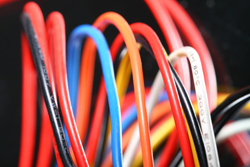Testing chambers for wiring standards
Funded by the European Commission, a project LVD sought to support measurement and testing of laboratories in which cabling can be tested to the required standards established by the EC. These regulations require that cables can be tested to withstand conditions of humidity of 91% to 95%. Moisture resistance is of particular concern because cables are often wired in places where moisture can accumulate. These test chambers are especially important for Newly Associated States who are required to meet and implement European standards on low-voltage directives (LVD). A drawback associated with these chambers is that by using different salts such as sodium sulphate (Na2SO4), and potassium nitrate (KNO3) attaining suitable testing conditions in the chamber is practically impossible. Furthermore, as the older climate chambers (especially those with psychrometric regulation) cannot easily test humidity to the required standards, a reliable means of assessment of chambers was seen as a necessary tool. Since evaluation standards on such chambers did not exist, developing a suitable testing procedure, taking into account metrological factors as well, was required. On this basis, the project was able to establish a chamber evaluation standard. The developed evaluation system is portable, suitable for both on-site and laboratory use. Moreover, both thermocouples and platinum resistance thermometers can be used. The system can also be used to determine the thermal signatures, gradients' fluctuations in laboratories or larger places such as homes, warehouses and even cold storage.



